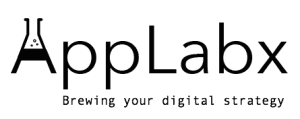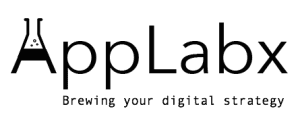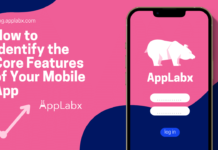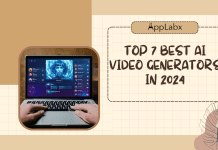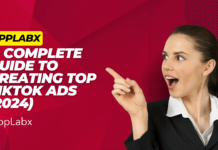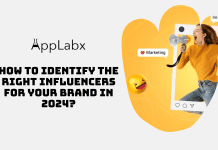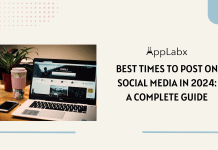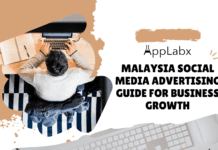Key Takeaways
- Choose social media platforms that align with your target audience for maximum reach and engagement.
- Develop a strategic content plan combining organic posts and budget-friendly ads to drive growth.
- Use analytics and automation tools to measure success and optimize your social media marketing efforts in 2025.
In today’s hyper-connected world, social media has become more than just a platform for social interaction—it is now a powerful marketing tool that small businesses can no longer afford to ignore. As we move into 2025, the digital landscape continues to evolve rapidly, with social media platforms becoming essential spaces where consumers discover brands, research products, engage with businesses, and make purchasing decisions.

For small businesses navigating a competitive online environment, social media marketing offers one of the most cost-effective and impactful ways to build brand visibility, attract customers, and drive sustainable growth. Whether you operate a local café, an e-commerce store, a freelance service, or a family-run shop, having a strong presence on platforms like Facebook, Instagram, TikTok, LinkedIn, and YouTube can significantly influence your success.
The statistics speak for themselves. As of 2025, over 5 billion people worldwide are active on social media, with average daily usage exceeding 2.5 hours per user. Consumers are not only scrolling for entertainment—they are actively searching for businesses, reading reviews, watching product demonstrations, and engaging with brands directly. In fact, recent studies show that 78 percent of consumers are more likely to purchase from brands they follow on social media, highlighting the immense potential for small businesses to convert online interactions into real-world sales.
Unlike traditional advertising, which often demands substantial budgets, social media marketing levels the playing field for small enterprises. It allows businesses with limited resources to reach targeted audiences through organic content, paid ads, influencer collaborations, and community-driven campaigns. Moreover, advancements in artificial intelligence, machine learning, and automation have made it easier than ever for small business owners to create professional-grade content, automate scheduling, and track performance with precision.
However, simply having a social media profile is not enough. The algorithms that power platforms like Instagram, TikTok, and Facebook prioritize relevant, engaging, and high-quality content. This means small businesses need a well-structured strategy to stand out amidst the noise, connect with the right audience, and achieve measurable results.
Navigating the world of social media in 2025 also requires an understanding of the latest trends. Short-form videos, AI-powered content creation, social commerce integrations, and influencer partnerships are no longer optional—they are essential components of any successful marketing strategy. Consumers now expect personalized experiences, authentic storytelling, and seamless interactions across every touchpoint.
This comprehensive guide is designed to help small business owners, entrepreneurs, and marketers understand how to harness the power of social media marketing effectively in 2025. Whether you are just starting or looking to refine your current approach, this guide will walk you through the fundamentals—from choosing the right platforms and crafting engaging content to leveraging paid ads and tracking success.
By the end of this guide, you will have a clear roadmap to elevate your small business through social media, grow your online presence, and convert followers into loyal customers. It is time to transform your digital marketing efforts and embrace the opportunities that social media offers for sustainable business growth in 2025 and beyond.
Social Media Marketing for Small Businesses: Your 2025 Starter Guide to Online Growth
- Why Social Media Marketing Matters for Small Businesses in 2025
- Choosing the Right Social Media Platforms in 2025
- How to Create a Winning Social Media Strategy in 2025
- Content Creation Tips for Small Businesses
- Mastering Social Media Advertising on a Small Budget
- Managing Your Social Media: Tools and Automation
- Common Mistakes Small Businesses Must Avoid in 2025
- Measuring Success: Key Social Media Metrics in 2025
- Future-Proofing Your Social Media Strategy
1. Why Social Media Marketing Matters for Small Businesses in 2025
Social media marketing is no longer just an option for small businesses; it is an essential growth driver. In 2025, where digital presence defines consumer trust and buying decisions, social media offers a powerful, cost-effective tool to compete with larger enterprises, foster community engagement, and drive sustainable business growth.
The 2025 Digital Landscape: A Game Changer for Small Businesses
- Over 5 billion global social media users in 2025
- 95 percent of internet users actively engage with social platforms daily
- Mobile-first consumption dominates, with over 80 percent of users accessing via smartphones
- AI-driven algorithms personalize content delivery more than ever
- Rising influence of social commerce, where transactions happen directly within platforms
Example:
A local bakery in Singapore uses Instagram Shopping and TikTok Reels to showcase daily specials, resulting in a 40 percent increase in foot traffic within three months.
Key Benefits of Social Media Marketing for Small Businesses
1. Increased Brand Visibility and Awareness
- Reach audiences locally and globally without geographical limitations
- Build brand presence where consumers already spend time
- Algorithms favor frequent, engaging, and high-quality content
Example:
A freelance graphic designer gains international clients by sharing design tips on LinkedIn and Behance, backed by consistent Instagram updates.
2. Cost-Effective Marketing with High ROI
- Social media ads start from as low as $5/day, offering flexible budgeting
- Organic reach is still powerful when combined with community engagement
- Lower acquisition costs compared to Google Ads or traditional marketing
| Marketing Method | Average Cost (2025) | Audience Reach Potential | ROI |
|---|---|---|---|
| Facebook/Instagram Ads | $5–$50/day | High (local + global) | High (3-6x average) |
| TikTok Organic Content | Free | Viral, younger audiences | Very High (up to 10x) |
| LinkedIn Ads | $10–$50/day | B2B professionals | Moderate to High |
| Print Advertising | $200–$1,000/campaign | Local only | Low |
3. Direct Customer Engagement and Relationship Building
- Two-way conversations build trust and loyalty
- Real-time customer support via comments, DMs, and live chats
- Showcase brand personality and values authentically
Example:
A small eco-friendly skincare brand hosts weekly Instagram Live Q&A sessions, leading to a 25 percent boost in repeat customers.
4. Lead Generation and Sales Growth
- Platforms integrate lead forms, shopping tabs, and instant checkout features
- Social commerce generates direct conversions within apps
- Retargeting strategies recover abandoned carts and nurture cold audiences
Example:
An online bookstore uses Facebook Ads with lead forms offering a free eBook, generating 1,500 new subscribers in two weeks.
Latest 2025 Social Media Trends Powering Small Business Success
| Trend | Description | Why It Matters | Example |
|---|---|---|---|
| Social Commerce | Shopping directly on Instagram, Facebook, TikTok | Simplifies buyer journey, boosts impulse purchases | Clothing store sells 60% of stock via IG Shop |
| AI-Generated Content | Automated captions, video edits, and content suggestions | Saves time, maintains consistency | Café uses AI to generate weekly menu posts |
| Short-Form Video Dominance | TikTok, Reels, YouTube Shorts lead in engagement | Higher visibility, easier to go viral | Gym shares 30-sec workouts, gains 10K followers |
| Influencer & Micro-Influencer Marketing | Partnering with creators with niche audiences | Builds trust, drives authentic engagement | Handmade jewelry store partners with micro-creator |
| Augmented Reality Filters | Interactive branded filters for Instagram, Snapchat | Enhances brand visibility, boosts engagement | Bakery uses AR filter to visualize custom cakes |
Why Customers Expect Businesses to Be on Social Media in 2025
Consumer Behavior Shifts
- 72 percent of users expect businesses to have an active social media presence
- 65 percent use social platforms to research products before purchasing
- Social proof (reviews, comments, shares) heavily influences buying decisions
Example:
A customer chooses a local fitness studio over a competitor after browsing their Instagram testimonials, transformation stories, and engaging video content.
Social Media vs. Traditional Marketing: A 2025 Comparison Matrix
| Factor | Social Media Marketing | Traditional Marketing |
|---|---|---|
| Cost | Low to moderate | High |
| Reach | Global + Local | Mostly local |
| Engagement | Two-way, interactive | One-way, passive |
| Targeting | Hyper-targeted (age, location, interests) | Broad |
| Flexibility | Real-time changes, A/B testing | Fixed once published |
| Performance Tracking | Instant analytics, track every action | Limited post-campaign metrics |
| Conversion Path | Direct (in-app checkout, DM orders) | Indirect (visit store, call, etc.) |
Conclusion: Social Media Is the New Growth Engine for Small Businesses in 2025
- Small businesses leveraging social media are seeing exponential growth compared to those relying solely on traditional channels.
- The ability to reach targeted audiences, foster meaningful connections, and convert interactions into sales makes social media indispensable in 2025.
- Embracing the latest trends, technologies, and strategies ensures that small businesses remain competitive, visible, and relevant in a fast-changing digital ecosystem.
2. Choosing the Right Social Media Platforms in 2025
Selecting the right social media platforms is one of the most critical decisions for small businesses aiming to maximize their online growth in 2025. Each platform has unique strengths, audience demographics, and content preferences. A well-informed platform selection strategy ensures businesses invest their time, effort, and budget where it delivers the highest ROI.
How to Select the Right Social Media Platforms for Your Business
Key Considerations:
- Target Audience: Understand where your ideal customers spend time online.
- Content Type Compatibility: Match the platform with the content formats you can consistently produce (e.g., video, images, text, live streams).
- Business Goals: Align the platform with goals like brand awareness, lead generation, direct sales, or community building.
- Industry Fit: Some platforms perform better for B2B (e.g., LinkedIn) while others excel for B2C (e.g., TikTok, Instagram).
- Ad Costs and Reach: Evaluate the advertising ecosystem and organic reach potential.
2025 Social Media Platform Overview for Small Businesses
| Platform | Primary Audience | Best For | Growth Trend (2025) |
|---|---|---|---|
| 25–65+, broad demographic | Community building, local ads, groups | Steady, mature | |
| 18–45, Millennials, Gen Z | Visual branding, reels, product showcases | Growing via short-form and shopping | |
| TikTok | 16–35, younger demographics | Viral content, storytelling, entertainment | Explosive growth |
| 25–55, professionals, B2B | Networking, lead generation, B2B marketing | Growing for small B2B firms | |
| YouTube | All ages | Long-form videos, tutorials, product demos | Consistently strong |
| X (Twitter) | 25–50, real-time audience | News, quick updates, customer service | Niche, stable |
| 20–45, predominantly female | DIY, home decor, fashion, inspiration | Steady in niche industries | |
| Threads (Meta) | 18–35, Instagram-linked users | Text-based conversations, trending topics | Emerging |
| WhatsApp/Telegram | All ages | Customer service, order management, updates | Growing in business messaging |
Platform-by-Platform Breakdown: Strengths, Weaknesses, and Use Cases
1. Facebook (Meta)
- Strengths:
- Powerful local advertising
- Community-driven via Facebook Groups
- Versatile content support (videos, images, live streams)
- Weaknesses:
- Declining organic reach
- Younger users shifting away
- Use Case Example:
- A local restaurant runs targeted Facebook Ads with a special weekend menu offer, generating 150 reservations in 48 hours.
2. Instagram
- Strengths:
- Highly visual, ideal for products, fashion, food, and lifestyle
- Instagram Reels drive viral growth
- Shopping features with in-app checkout
- Weaknesses:
- Algorithm favors video; photo reach has declined
- Use Case Example:
- A handmade jewelry business uses Reels to showcase behind-the-scenes craftsmanship, resulting in a 60% increase in online orders.
3. TikTok
- Strengths:
- Unmatched organic reach potential in 2025
- Trend-driven; strong for storytelling and personality-led brands
- TikTok Shop enables direct selling
- Weaknesses:
- High content volume needed for consistency
- Audience skews younger, though aging upwards
- Use Case Example:
- A small pet supplies store posts fun pet videos and tips, growing from 500 to 25,000 followers in six months, doubling sales.
4. LinkedIn
- Strengths:
- Ideal for B2B businesses, consultants, and service providers
- Lead generation through networking and thought leadership
- High-quality engagement from decision-makers
- Weaknesses:
- Not suitable for highly visual or casual B2C products
- Use Case Example:
- A freelance HR consultant shares regular hiring tips, securing five new clients per month from LinkedIn alone.
5. YouTube
- Strengths:
- Long-form, evergreen content
- Second-largest search engine after Google
- Great for tutorials, product demos, and brand storytelling
- Weaknesses:
- Higher production effort
- Slower audience growth compared to TikTok or Reels
- Use Case Example:
- A landscaping company posts “DIY Garden Makeover” videos, which consistently drive website traffic and leads over years.
6. X (formerly Twitter)
- Strengths:
- Fast-paced communication
- Good for news, announcements, and customer support
- Weaknesses:
- Limited algorithm-driven growth
- Shorter content lifespan
- Use Case Example:
- A tech repair shop uses X to post real-time service updates and address customer queries instantly.
7. Pinterest
- Strengths:
- Strong for inspiration, DIY, and lifestyle products
- High referral traffic potential to websites
- Evergreen content (pins can drive traffic for years)
- Weaknesses:
- Limited engagement beyond discovery
- Use Case Example:
- An online furniture store shares mood boards, generating steady monthly web traffic from Pinterest users.
8. Threads (Meta)
- Strengths:
- Text-based conversations combined with Instagram’s ecosystem
- Great for brands building community discussions
- Weaknesses:
- New platform; algorithm and user behavior still evolving
- Use Case Example:
- A startup uses Threads to share business tips, getting rapid feedback and growing a loyal audience.
9. WhatsApp & Telegram (Messaging Apps)
- Strengths:
- Direct communication with customers
- High open rates for messages (>90%)
- Great for customer service, orders, and updates
- Weaknesses:
- Limited discoverability (not a content platform)
- Use Case Example:
- A small catering business manages all bookings and sends menu updates via WhatsApp, streamlining customer communication.
Platform Selection Matrix for Small Businesses (2025)
| Business Type | Best Platforms | Why |
|---|---|---|
| Local Retail Store | Facebook, Instagram, WhatsApp | Local targeting, visual product display, direct messaging |
| E-commerce (Fashion, Products) | Instagram, TikTok, Pinterest, Facebook | Shopping features, high visual appeal, viral potential |
| Professional Services (B2B) | LinkedIn, YouTube, Facebook | Lead generation, thought leadership, community groups |
| Food & Beverage | Instagram, TikTok, Facebook, WhatsApp | Visual appeal, influencer potential, fast customer support |
| Creative/Artistic Services | Instagram, Pinterest, TikTok, YouTube | Showcase portfolios, DIY content, behind-the-scenes storytelling |
| Education & Training | YouTube, LinkedIn, TikTok | Tutorials, webinars, expert branding |
| Health & Fitness | Instagram, TikTok, YouTube, Facebook | Fitness reels, tutorials, community groups |
2025 Growth Trend Chart: Platform Popularity Trajectory
| Platform | 2023 | 2024 | 2025 | Growth Direction |
|-------------|------|------|------|------------------|
| TikTok | 9.1 | 9.5 | 9.9 | Rapid Growth |
| Instagram | 8.8 | 9.2 | 9.5 | Steady Increase |
| Facebook | 9.0 | 8.9 | 8.7 | Slight Decline |
| LinkedIn | 7.5 | 8.0 | 8.5 | Growing |
| YouTube | 9.2 | 9.4 | 9.6 | Steady |
| X (Twitter) | 7.0 | 6.8 | 6.7 | Declining |
| Pinterest | 6.8 | 6.9 | 7.0 | Stable in niche |
| Threads | - | 6.0 | 7.5 | Emerging Growth |
| WhatsApp | 8.0 | 8.3 | 8.6 | Growing in B2C |
Conclusion: Focus on Quality Over Quantity
- Small businesses do not need to be on every platform; they need to be where their customers are.
- Focus resources on mastering two to three platforms that align with your audience and goals.
- Prioritize platforms with growth trends relevant to your industry, and leverage their unique features like reels, shops, or communities.
3. How to Create a Winning Social Media Strategy in 2025
Building a successful social media strategy in 2025 requires more than just posting content—it demands a data-driven approach, creativity, consistency, and alignment with business goals. With algorithms constantly evolving and user expectations increasing, small businesses must craft intentional strategies to remain competitive, engage audiences, and drive measurable growth.
Step 1: Set Clear, Measurable Goals
Types of Goals for Social Media in 2025
- Brand Awareness: Increase visibility, followers, and reach.
- Engagement: Drive interactions such as comments, shares, and likes.
- Lead Generation: Capture emails, phone numbers, and inquiries.
- Website Traffic: Direct users from social media to your website or landing pages.
- Sales and Conversions: Generate direct purchases via social commerce or website.
- Customer Support: Use DMs, comments, and chatbots for customer service.
SMART Goal Framework Example:
| Goal Type | Example Goal | Timeframe |
|---|---|---|
| Brand Awareness | Gain 2,000 Instagram followers | 3 months |
| Engagement | Achieve 500 average post likes on TikTok | 2 months |
| Lead Generation | Generate 200 leads through LinkedIn lead forms | 6 months |
| Sales | Increase sales by 20% through Instagram Shop | 4 months |
| Traffic | Drive 5,000 clicks to the website from Facebook Ads | 2 months |
Step 2: Define and Understand Your Target Audience
Audience Research Essentials:
- Demographics: Age, gender, location, occupation.
- Psychographics: Interests, values, pain points, lifestyle.
- Behavior: Preferred platforms, content consumption habits, purchase behavior.
Methods to Gather Audience Insights:
- Use platform analytics (Meta Insights, TikTok Analytics, LinkedIn Analytics).
- Conduct polls and surveys directly on Instagram Stories, Facebook, or Threads.
- Analyze competitors’ followers and engagement patterns.
- Utilize AI-based tools for audience segmentation (e.g., Sprout Social, Hootsuite).
Audience Persona Example:
| Attribute | Example: Eco-Friendly Skincare Brand |
|---|---|
| Age | 22–35 |
| Gender | Mostly female |
| Location | Urban areas (New York, London, Singapore) |
| Interests | Sustainability, wellness, vegan products |
| Challenges | Finding affordable, natural skincare |
| Preferred Platforms | Instagram, TikTok, Pinterest |
Step 3: Develop a Content Plan That Converts
Content Pillars:
- Educational: How-tos, tips, tutorials.
- Entertaining: Memes, trends, challenges.
- Inspirational: Success stories, testimonials, behind-the-scenes.
- Promotional: Product launches, special offers, sales.
- Interactive: Polls, Q&A, contests, live streams.
Content Format Matrix (2025):
| Content Type | Platform Examples | Effectiveness |
|---|---|---|
| Short-form video | TikTok, Instagram Reels, YouTube Shorts | Very High |
| Long-form video | YouTube, LinkedIn | High |
| Stories | Instagram, Facebook, WhatsApp | High for daily updates |
| Carousels | Instagram, LinkedIn | High engagement |
| Livestream | Facebook, Instagram, TikTok, YouTube | Builds real-time trust |
| Text threads | Threads, LinkedIn, X (Twitter) | Growing in 2025 |
| User-generated | All platforms | Extremely effective |
Example Content Calendar Template:
| Day | Platform | Content Type | Goal |
|---|---|---|---|
| Monday | Carousel (Tips) | Engagement | |
| Tuesday | TikTok | Behind-the-scenes | Brand Awareness |
| Wednesday | Thought Leadership | Lead Generation | |
| Thursday | Reels (Product Demo) | Sales | |
| Friday | Giveaway Post | Engagement | |
| Saturday | YouTube | Tutorial Video | Traffic |
| Sunday | TikTok | Trend/Challenge | Brand Awareness |
Step 4: Leverage 2025 Trends for Maximum Impact
Emerging Social Media Trends to Integrate:
- AI-Driven Content Creation: Tools for automated captions, video editing, and graphic generation.
- Social Commerce Expansion: Sell directly through Instagram Shops, TikTok Shop, and Facebook.
- Short-Form Video Dominance: Prioritize Reels, TikToks, and Shorts.
- Micro-Influencer Collaborations: Partner with creators who have niche, engaged audiences.
- Live Shopping Events: Host live sales on TikTok, Instagram, and Facebook.
- Augmented Reality (AR) Filters: Create interactive experiences for users.
Example:
A fashion boutique uses AI to generate Instagram captions and schedules a TikTok Live showcasing a new collection. This results in a 35% increase in sales within 24 hours.
Step 5: Build an Engagement and Community Strategy
Best Practices:
- Respond to every comment and DM promptly.
- Use Instagram Stories polls, question boxes, and quizzes to boost interaction.
- Host Q&A sessions or live chats weekly.
- Create a branded hashtag for user-generated content (UGC).
- Feature customer photos and testimonials on social feeds.
Example:
A local café creates a hashtag #CoffeeWithCornerCafe, encouraging customers to post their drinks. Within a month, over 500 customer posts contribute to organic growth.
Step 6: Utilize Paid Ads Strategically
Key Ad Strategies in 2025:
- Objective-Based Campaigns: Brand awareness, lead generation, conversions.
- Dynamic Ads: Personalized product recommendations based on user behavior.
- Retargeting: Engage users who visited your website or interacted with previous posts.
- Lookalike Audiences: Reach new people similar to your existing customers.
- Test Multiple Creatives: A/B testing for videos, carousels, static ads.
Advertising Budget Matrix (Small Business Example):
| Platform | Minimum Daily Budget | Recommended Goal |
|---|---|---|
| $5 | Local reach, promotions | |
| $7 | Sales via Shops, awareness | |
| TikTok | $10 | Viral reach, product videos |
| $15 | B2B lead generation | |
| YouTube | $10 | Tutorial and product ads |
Step 7: Performance Tracking and Continuous Improvement
Key Social Media Metrics to Monitor:
- Reach: How many people saw your content.
- Engagement Rate: Likes, shares, comments relative to followers.
- Follower Growth: Net gain or loss over time.
- Click-Through Rate (CTR): Number of clicks divided by impressions.
- Conversion Rate: Percentage of users completing a desired action.
- Return on Ad Spend (ROAS): Revenue generated vs. ad spend.
KPI Tracking Example:
| Platform | Metric | Goal | Current | Status |
|---|---|---|---|---|
| Engagement Rate | 6% | 5.5% | On Track | |
| TikTok | Follower Growth | +500/month | +620 | Exceeding |
| Leads Generated | 50 per month | 40 | Needs Focus | |
| Facebook Ads | ROAS | 4x | 3.8x | On Track |
| YouTube | Website Clicks | 2,000/month | 1,800 | Nearly There |
Conclusion: Crafting a Future-Ready Strategy for 2025
- A winning social media strategy is data-driven, creative, and responsive to trends.
- Businesses must balance content quality, platform selection, community engagement, and paid advertising.
- Regularly reviewing analytics ensures continuous improvement, helping small businesses stay ahead in an ever-changing digital landscape.
4. Content Creation Tips for Small Businesses
Creating high-quality, engaging, and relevant content is the backbone of any successful social media strategy in 2025. With algorithm-driven feeds prioritizing value-driven and interactive content, small businesses must focus on producing content that not only captures attention but also fosters engagement, builds trust, and drives conversions.
The Importance of Content in Social Media Marketing
- Content is the foundation of brand identity online.
- Platforms reward consistent, engaging, and relevant content.
- High-quality content increases reach, engagement, and sales.
- Small businesses can build strong communities through relatable, authentic storytelling.
1. Understand Your Brand Voice and Visual Identity
Key Elements of Brand Identity:
- Brand Voice: Friendly, professional, witty, educational, inspiring, or conversational.
- Tone: Casual, formal, humorous, empathetic, or authoritative depending on the audience.
- Visual Elements: Brand colors, logo placement, font style, and image aesthetics.
Brand Style Guide Example Matrix:
| Element | Example for Sustainable Clothing Brand |
|---|---|
| Brand Voice | Friendly, Empowering, Educational |
| Tone | Optimistic, Honest, Transparent |
| Color Palette | Earth tones: Green, Beige, White |
| Fonts | Sans-serif, clean, modern |
| Imagery Style | Natural lighting, real customers, minimal edits |
2. Focus on Video-First Content Strategy (Dominant in 2025)
Why Prioritize Video?
- Video content drives 120% higher engagement compared to static images.
- Platforms like TikTok, Instagram Reels, and YouTube Shorts prioritize short-form videos.
- Videos increase time spent on posts, boosting algorithm performance.
Video Content Ideas:
- Behind-the-Scenes: Show the process, workspace, or day-in-the-life.
- Product Demonstrations: How-to-use tutorials or unboxings.
- Customer Testimonials: Real customer experiences.
- Trending Challenges: Participate in platform-specific trends.
- Live Streams: Q&A sessions, product launches, or workshops.
Example:
A handmade candle business creates Reels showing the candle-making process. This drives a 40% increase in Instagram followers within two months.
3. Mix Content Formats for Maximum Engagement
| Format | Best Platform | Purpose | Engagement Level |
|---|---|---|---|
| Short-form Video | TikTok, Reels, Shorts | Viral growth, quick storytelling | Very High |
| Long-form Video | YouTube, LinkedIn | Tutorials, storytelling, deep dives | High |
| Stories | Instagram, Facebook, WhatsApp | Daily updates, polls, engagement | High |
| Carousels | Instagram, LinkedIn | Step-by-step tips, lists, education | High |
| Livestream | TikTok, Instagram, YouTube | Real-time interaction | High |
| Single Image Posts | Facebook, Instagram | Brand announcements, offers | Medium |
| Text Threads | Threads, X (Twitter) | Thought leadership, tips | Growing |
4. Incorporate Storytelling to Build Connections
Storytelling Tips:
- Focus on people, not just products.
- Share origin stories about how your business started.
- Highlight customer success stories.
- Use “Before and After” formats (perfect for fitness, home decor, fashion).
- Share founder’s journey, struggles, and wins.
Example:
A fitness coach shares transformation stories of clients with before-and-after visuals and personal narratives, leading to a 25% increase in consultation bookings.
5. Encourage and Leverage User-Generated Content (UGC)
Benefits of UGC:
- Builds authenticity and trust.
- Increases engagement organically.
- Reduces the cost of content creation.
Ways to Encourage UGC:
- Create a branded hashtag.
- Run photo or video contests.
- Feature customer photos on your feed.
- Offer incentives (discounts or free products) for sharing content.
Example:
A bakery uses the hashtag #BakesByBella, encouraging customers to share their pastry photos. Over 300 UGC posts lead to a 15% boost in orders.
6. Use DIY Content Creation Tools (Affordable for Small Businesses)
| Tool | Purpose | Platform Compatibility |
|---|---|---|
| Canva | Graphic design, carousels, stories | Instagram, Facebook, LinkedIn |
| CapCut | Video editing, captions, effects | TikTok, Instagram, YouTube |
| InVideo | Video templates, ads | All major platforms |
| Adobe Express | Branding, graphics, short videos | Instagram, Facebook, Pinterest |
| Lumen5 | Turn blogs into videos | LinkedIn, YouTube |
| Later/Buffer | Scheduling and auto-publishing | Instagram, Facebook, LinkedIn |
7. Optimize for Platform Algorithms in 2025
General Algorithm Tips:
- Post consistently (3–5 times per week minimum).
- Engage within the first 30 minutes after posting (reply to comments, DMs).
- Use platform-specific features like Instagram Reels, TikTok Live, LinkedIn Articles.
- Incorporate trending sounds, hashtags, or challenges.
- Focus on watch time for videos to boost reach.
Hashtag Strategy Matrix:
| Platform | Number of Hashtags | Strategy Example |
|---|---|---|
| 5–15 | Mix branded (#MyCafeName) + niche (#LatteArt) | |
| TikTok | 3–6 | Trending + relevant (#SmallBizTips) |
| 3–5 | Professional (#MarketingTips) | |
| Threads | 2–4 | Topical (#StartupLife) |
| Keyword-based | Descriptive titles (no hashtags needed) |
8. Repurpose Content Across Platforms
Repurposing Strategy:
- Turn a TikTok video into an Instagram Reel and a YouTube Short.
- Convert a blog post into a LinkedIn carousel or Threads series.
- Break a YouTube tutorial into multiple Instagram clips.
- Turn customer reviews into quote graphics for Instagram and Facebook.
Example:
A travel agency records a single travel guide video, edits it into a Reel, a TikTok, and a YouTube Short, then turns highlights into a Threads post. This multiplies reach without additional filming.
9. Plan for Accessibility and Inclusivity
Best Practices:
- Add alt-text to images for visually impaired users.
- Include captions on all videos for sound-off viewers (70% watch without sound).
- Use inclusive language respecting gender, culture, and diversity.
- Design with high-contrast colors for better readability.
10. Balance Evergreen and Trend-Driven Content
| Content Type | Definition | Purpose |
|---|---|---|
| Evergreen | Always relevant (e.g., “5 Social Media Tips”) | Drives consistent long-term engagement |
| Trend-Driven | Capitalizes on current trends (memes, sounds) | Short bursts of viral attention |
Recommendation:
- 60% evergreen for consistency.
- 40% trend-driven for virality and relevance.
Conclusion: Quality Content is the Currency of Social Media Success
- Content creation in 2025 goes beyond aesthetics—it’s about storytelling, value, and community.
- Small businesses can compete with larger brands by focusing on authentic, creative, and consistent content.
- Leveraging video-first strategies, user-generated content, and smart use of creation tools empowers small businesses to scale their digital presence effectively.
5. Mastering Social Media Advertising on a Small Budget
Social media advertising remains one of the most powerful and cost-effective ways for small businesses to drive growth, increase brand visibility, generate leads, and boost sales. Even with a limited budget, small businesses can compete with larger brands by using precise targeting, compelling creatives, and data-driven strategies.
Why Social Media Advertising Matters for Small Businesses in 2025
- Platforms like Facebook, Instagram, TikTok, LinkedIn, and YouTube offer highly targeted, affordable advertising options.
- Even a budget of $5–$20 per day can deliver meaningful results.
- AI-powered ad optimization ensures that ads are served to the most relevant users.
- Ads can drive measurable actions: clicks, leads, sales, and store visits.
Step 1: Choosing the Right Platforms for Your Ads
| Platform | Best For | Minimum Daily Budget (2025) | Ad Strength |
|---|---|---|---|
| Local targeting, events, small businesses | $5 | Wide targeting, strong for retargeting | |
| Product promotion, lifestyle brands, eCommerce | $7 | Visual storytelling, reels, shopping | |
| TikTok | Viral products, services, brand awareness | $10 | Fast reach, younger audiences, trends |
| B2B services, consulting, education | $15 | High-quality leads, professional users | |
| YouTube | Tutorials, product reviews, brand storytelling | $10 | Video-based search and discovery |
| eCommerce, DIY, lifestyle products | $5 | Strong for product discovery |
Step 2: Setting Clear Advertising Objectives
Primary Advertising Goals:
- Brand Awareness: Reach as many relevant users as possible.
- Traffic: Drive clicks to websites, landing pages, or stores.
- Lead Generation: Capture contact information via in-app forms or landing pages.
- Conversions/Sales: Generate online or in-store purchases.
- Engagement: Increase likes, shares, comments, and follows.
- Video Views: Boost watch time for video content.
Objective-to-Platform Fit Matrix:
| Objective | Recommended Platforms |
|---|---|
| Brand Awareness | Facebook, Instagram, TikTok, YouTube |
| Traffic | Facebook, Instagram, LinkedIn, Pinterest |
| Lead Generation | Facebook, LinkedIn, Instagram |
| Conversions | Instagram, TikTok, Facebook, Pinterest |
| Engagement | TikTok, Instagram, Facebook |
| Video Views | YouTube, TikTok, Instagram Reels |
Step 3: Mastering Budget Allocation
How to Allocate a Small Budget:
- Start Small: Begin with $5–$10/day to test creatives and audiences.
- Focus on One or Two Platforms: Avoid spreading thin.
- Split Budget:
- 70% on Conversion or Lead Generation Campaigns
- 30% on Awareness and Engagement Campaigns
Budget Allocation Example:
| Total Monthly Budget | Conversion Campaign | Awareness/Engagement |
|---|---|---|
| $300 | $210 | $90 |
| $500 | $350 | $150 |
| $1000 | $700 | $300 |
Step 4: Targeting the Right Audience on a Small Budget
Targeting Strategies:
- Location-Based: Focus on local regions, neighborhoods, or cities.
- Interest Targeting: Choose interests like “Yoga”, “Vegan Food”, “Tech Gadgets”.
- Behavior Targeting: Target users based on purchase behavior or device usage.
- Lookalike Audiences: Target users similar to your best customers.
- Retargeting: Reach users who visited your website or engaged with your posts.
Example:
A small flower shop runs Facebook Ads targeting users within a 5km radius who are interested in weddings, leading to a 25% increase in bridal orders.
Step 5: Crafting High-Performing Ad Creatives
Ad Creative Best Practices:
- Video > Image > Text: Video outperforms all other formats in 2025.
- Clear Value Proposition: Highlight benefits upfront.
- Strong Call to Action (CTA): Examples: “Shop Now”, “Book Today”, “Get a Free Quote”.
- Mobile-First Design: Use vertical formats (9:16) for Instagram, TikTok, and Facebook.
- Use Captions: 70% of users watch videos without sound.
Ad Copy Formula:
- Hook + Problem + Solution + CTA
- Example:
“Tired of clutter? Our eco-friendly storage boxes are now 20% off! Shop now and organize your space effortlessly.”
Example of Creative Types:
| Creative Format | Best Platform | Performance (2025) |
|---|---|---|
| Short Video (15-60s) | TikTok, Instagram | Very High |
| Image Carousel | Facebook, Instagram | High |
| Single Image | Facebook, LinkedIn | Moderate |
| Text + Link | LinkedIn, Threads | Moderate (for B2B) |
| YouTube Video | YouTube | High for storytelling/search |
Step 6: Optimizing Ad Performance with A/B Testing
What to Test:
- Headlines: Different hooks or offers.
- Creative Formats: Video vs. image.
- Audience Segments: Age, interests, or behaviors.
- CTA Buttons: “Shop Now” vs. “Learn More” vs. “Book Today”.
A/B Testing Matrix Example:
| Variable | Test A | Test B | Result |
|---|---|---|---|
| Headline | “50% Off Today Only” | “Limited Offer Ends Soon” | Test A: +30% CTR |
| Creative | Product Demo Video | Product Image Carousel | Test A: +25% ROAS |
| Audience | Age 18-34 | Age 35-54 | Test A: +40% Conversions |
| CTA | “Shop Now” | “Learn More” | Test A: Higher Sales |
Step 7: Retargeting to Maximize ROI
Retargeting Tactics:
- Website Visitors: Serve ads to users who viewed products but did not purchase.
- Add-to-Cart Users: Offer discounts to encourage checkout completion.
- Video Viewers: Retarget those who watched more than 50% of your videos.
- Engaged Followers: Promote offers to users who engaged with previous posts.
Example:
An online clothing store retargets users who added items to the cart but abandoned checkout with a 10% discount ad, recovering 18% of abandoned carts.
Step 8: Measuring Success and Adjusting Ads
Key Advertising KPIs:
- CTR (Click-Through Rate): How many clicks per impressions.
- CPC (Cost Per Click): Lower indicates efficient spend.
- CPM (Cost Per Mille): Cost per 1000 impressions.
- ROAS (Return on Ad Spend): Revenue vs. ad cost.
- Conversion Rate: % of users completing the desired action.
- Frequency: Average number of times each person sees the ad (watch for fatigue).
KPI Benchmark Example (2025):
| Platform | CTR Benchmark | CPC Benchmark | ROAS Goal |
|---|---|---|---|
| 1.2% – 2.5% | $0.50 – $1.20 | 3x – 5x | |
| 1.5% – 3.0% | $0.60 – $1.40 | 4x – 6x | |
| TikTok | 2.0% – 4.5% | $0.30 – $1.00 | 5x – 8x |
| 0.6% – 1.5% | $1.50 – $4.00 | 2x – 4x | |
| YouTube | 0.8% – 2.0% | $0.60 – $1.50 | 3x – 5x |
Step 9: Scaling Ads While Staying Budget-Conscious
Scaling Strategies:
- Increase the daily budget gradually (by 10-20% every 2–3 days).
- Expand Lookalike Audiences based on top customers.
- Duplicate winning ads and try them with new audiences.
- Test new creatives while keeping the winning ones running.
Example:
A small skincare brand starts with a $10/day TikTok ad. After achieving a 6x ROAS for 10 days, they scale to $25/day while maintaining profitability.
Conclusion: Small Budgets, Big Impact
- Social media advertising in 2025 empowers small businesses to compete effectively, even with limited budgets.
- By focusing on targeted ads, strong creatives, A/B testing, and retargeting, small businesses can drive meaningful results without overspending.
- The key to success is consistency, data-driven optimization, and gradual scaling.
6. Managing Your Social Media: Tools and Automation
Managing social media efficiently is crucial for small businesses aiming to grow without spending excessive time on manual tasks. In 2025, automation tools, AI-powered platforms, and integrated software have become indispensable for streamlining content scheduling, engagement, analytics, and performance optimization.
Why Social Media Management Tools Matter in 2025
- Save Time: Automate repetitive tasks like posting, reporting, and monitoring.
- Improve Consistency: Maintain a consistent posting schedule across multiple platforms.
- Boost Engagement: Automatically reply to comments, DMs, and customer inquiries.
- Enhance Analytics: Gain actionable insights to improve content and campaigns.
- Scale Easily: Manage multiple accounts without hiring extra staff.
Step 1: Essential Features of Social Media Management Tools
| Feature | Purpose |
|---|---|
| Content Scheduling | Plan and auto-publish posts across platforms |
| Analytics & Reporting | Track KPIs, engagement, and ROI |
| Social Listening | Monitor mentions, trends, and customer feedback |
| Engagement Management | Manage DMs, comments, and mentions in one place |
| AI-Powered Suggestions | Content ideas, optimal posting times, caption help |
| Ad Management | Monitor and adjust paid campaigns |
| Approval Workflow | Collaborate with teams or clients efficiently |
Step 2: Top Social Media Management Tools for 2025
| Tool | Best For | Key Features | Pricing (Approx.) |
|---|---|---|---|
| Hootsuite | Multi-platform management | Scheduling, analytics, listening | From $99/month |
| Buffer | Simplicity and affordability | Scheduling, link tracking, reporting | From $6/month per channel |
| Later | Visual-first brands (Instagram, TikTok) | Visual planner, auto-post, Linkin.bio | From $18/month |
| Sprout Social | Agencies and businesses needing advanced insights | CRM, in-depth analytics, approvals | From $249/month |
| Metricool | Small business and freelancers | Planning, analytics, competitor tracking | From $18/month |
| Canva Pro | Content creation + quick scheduling | Templates, designs, schedule posts | From $12.99/month |
| Zoho Social | Budget-friendly management | Monitoring, scheduling, reporting | From $15/month |
Step 3: Best Automation Practices for Small Businesses
1. Content Scheduling Automation
- Plan content weeks or months in advance.
- Use drag-and-drop calendar tools for Instagram, TikTok, LinkedIn, Facebook, Pinterest.
- Set posts to auto-publish during peak engagement hours.
2. AI-Generated Captions and Hashtags
- Tools like Copy.ai, Jasper, or Canva Magic Write suggest engaging captions.
- Auto-generate hashtag lists based on post topics or trends.
3. Automated Customer Engagement
- Deploy chatbots on Facebook Messenger, WhatsApp, or Instagram DM.
- Set auto-replies for frequently asked questions.
- Route complex queries to human support.
4. Auto Reporting and Insights
- Weekly or monthly performance reports are generated automatically.
- Monitor growth in followers, engagement, and reach without manual calculations.
Step 4: Automation Without Losing Authenticity
Balance Tips:
- Automate routine tasks: Scheduling, reporting, hashtag generation.
- Keep engagement personal: Respond to DMs, comments, and reviews manually or with personalized templates.
- Use AI for drafts but personalize final captions.
- Mix automated posts with real-time stories, live videos, or spontaneous posts.
Example:
A fitness studio schedules promotional posts weekly via Later but goes live every Saturday for a real-time workout, balancing automation with authenticity.
Step 5: Social Media Automation Workflow Example
| Task | Tool | Automation Type | Frequency |
|---|---|---|---|
| Content Scheduling | Later, Buffer | Auto-scheduling | Weekly/Monthly |
| Caption Generation | Canva Pro, Jasper | AI-generated drafts | Per Post |
| Engagement Monitoring | Hootsuite, Sprout | Auto notifications | Daily |
| Customer Replies | WhatsApp Bot | Automated responses | 24/7 |
| Analytics Reporting | Metricool, Sprout | Auto-generated reports | Weekly/Monthly |
| Trend Monitoring | Sprout, Hootsuite | Social listening alerts | Daily |
Step 6: Integrating AI into Social Media Management
AI Capabilities in 2025:
- Predictive Posting: AI suggests the best times based on audience behavior.
- Content Scoring: AI predicts post success before publishing.
- Caption and Headline Optimization: Instant A/B testing suggestions.
- Visual Content Generation: Create graphics, videos, or stories using AI-powered tools like Canva AI or Adobe Sensei.
Example:
A digital marketing agency uses Sprout’s AI to optimize LinkedIn post timings, resulting in a 30% increase in engagement.
Step 7: Cost-Efficient Automation for Small Businesses
| Automation Level | Recommended Tools | Monthly Cost Range | Benefits |
|---|---|---|---|
| Basic | Buffer, Canva Pro, Zoho | $20–$50 | Simple scheduling and basic reporting |
| Intermediate | Later, Metricool | $50–$150 | Visual planner, competitor tracking, insights |
| Advanced | Hootsuite, Sprout, HubSpot | $150–$500+ | CRM, deep analytics, full automation suite |
Step 8: Common Mistakes to Avoid in Automation
- Over-automation: Relying solely on scheduled content without real-time engagement.
- Ignoring Comments: Not monitoring DMs or comments regularly.
- No Content Variety: Posting the same content across all platforms without tailoring.
- Inconsistent Review of Data: Failing to adjust strategies based on analytics.
- Forgetting Human Touch: Automated replies that sound robotic rather than empathetic.
Step 9: Social Media Automation Trends for 2025
- AI-Powered Video Editing: Tools automatically edit clips for TikTok, Reels, and Shorts.
- Voice-to-Post Features: Speak captions or commands that turn into posts.
- Integrated Sales Funnels: Social tools directly connect with e-commerce (Instagram Shop, TikTok Shop).
- Hyper-Personalized Ads: Automation customizes ads based on user behavior in real time.
- Cross-Platform Comment Management: Reply to Instagram, TikTok, and Facebook DMs from a single dashboard.
Conclusion: Automation is the Key to Scalable, Sustainable Growth
- Automation tools in 2025 allow small businesses to maximize efficiency, consistency, and ROI while maintaining a human, authentic brand presence.
- The winning formula blends automated systems for scheduling, reporting, and monitoring with personalized engagement and creative input.
- Small businesses leveraging the right tools will stay competitive, freeing time to focus on strategy, growth, and customer relationships.
7. Common Mistakes Small Businesses Must Avoid in 2025
In 2025, social media algorithms, consumer behavior, and digital trends continue to evolve rapidly. Many small businesses unintentionally make critical mistakes that reduce visibility, limit engagement, and waste both time and advertising budget. Avoiding these common pitfalls is essential for sustainable growth, brand reputation, and ROI.
Why Avoiding Mistakes is Crucial in 2025
- Social media platforms now prioritize authenticity, relevance, and engagement more than ever.
- With increased competition, even small errors can significantly impact reach and growth.
- Avoiding these mistakes ensures better algorithm placement, audience retention, and revenue generation.
1. Lack of a Clear Social Media Strategy
Key Mistakes:
- Posting randomly without a defined goal or plan.
- No alignment with business goals (awareness, leads, or sales).
- Ignoring platform-specific strategies.
Consequences:
- Poor engagement, inconsistent brand presence, wasted time.
Example:
A local bakery posts once every few weeks without a schedule. Their competitors, using a planned content calendar, double their followers within three months.
Solution Checklist:
| Task | Status |
|---|---|
| Defined target audience | ✅ |
| Clear goals (e.g., leads) | ✅ |
| Monthly content calendar | ✅ |
| Platform-specific tactics | ✅ |
2. Inconsistent Posting Frequency
Mistakes:
- Posting too rarely or disappearing for weeks.
- Posting excessively without quality control.
Optimal Posting Frequency (2025 Benchmark):
| Platform | Ideal Frequency |
|---|---|
| 4–5 posts/week + stories daily | |
| TikTok | 3–7 posts/week |
| 3–5 posts/week | |
| 3–4 posts/week | |
| YouTube Shorts | 3–5 videos/week |
Example:
A clothing store’s Instagram engagement drops by 40% after skipping posts for two weeks.
3. Using the Wrong Platforms for Your Audience
Common Mistakes:
- Focusing on the wrong platform for the target demographic.
- Spreading efforts too thin across every platform.
Audience-Platform Fit Matrix:
| Target Audience | Recommended Platforms (2025) |
|---|---|
| Gen Z (18–25) | TikTok, Instagram, YouTube Shorts |
| Millennials (26–40) | Instagram, Facebook, LinkedIn |
| Gen X (41–55) | Facebook, LinkedIn, YouTube |
| B2B Professionals | LinkedIn, Threads, YouTube |
| Visual Consumers | Instagram, Pinterest, TikTok |
Example:
A B2B consultant spends all ad budget on TikTok (wrong fit), resulting in low leads, instead of focusing on LinkedIn.
4. Poor Content Quality and Lack of Variety
Mistakes:
- Overusing generic stock images.
- No storytelling, no real people, and minimal video content.
- Not adapting to format trends (Reels, TikTok, Stories).
Content Mix Matrix:
| Content Type | Recommended % |
|---|---|
| Educational | 30% |
| Entertaining | 20% |
| Inspirational/Storytelling | 20% |
| Promotional | 20% |
| Interactive (polls, quizzes) | 10% |
Example:
A small gym uses only text-based posts while competitors post transformation videos, workouts, and member stories, gaining 3x more engagement.
5. Ignoring Video-First Content Trends
Mistakes:
- Relying only on static images or text.
- Not producing video content for Reels, TikTok, or Shorts.
Consequences:
- Reduced reach due to algorithm preference for video content.
Video Engagement Statistics (2025):
| Platform | Avg. Engagement Boost with Video |
|---|---|
| TikTok | +65% |
| +58% | |
| YouTube Shorts | +70% |
| +45% | |
| +52% |
6. Poor Engagement and Ignoring Comments or DMs
Mistakes:
- Not replying to comments or questions.
- Ignoring DMs or automated replies without follow-up.
Consequences:
- Lower algorithm reach and damaged customer trust.
Example:
A pet store ignores 20 customer inquiries in Instagram DMs about a product launch and loses potential sales to competitors.
Best Practices:
- Respond within 1–3 hours during business hours.
- Set auto-replies for FAQs but follow up personally.
- Use comment management tools like Sprout Social or Hootsuite.
7. Over-Reliance on Automation Without a Human Touch
Mistakes:
- Overusing scheduled posts without engaging in real-time.
- Automated replies that sound robotic.
Example:
A restaurant uses bots to respond to all comments, leading customers to feel ignored when specific questions go unanswered.
Solution:
- Combine automation for posting and reporting with manual engagement for DMs and comments.
8. Weak or Misaligned Branding
Mistakes:
- Inconsistent logo use, font styles, and tone across platforms.
- No clear brand voice or visual identity.
Brand Consistency Checklist:
| Element | Consistency Status |
|---|---|
| Logo | ✅ |
| Color Palette | ✅ |
| Fonts | ✅ |
| Tone of Voice | ✅ |
| Content Style | ✅ |
Example:
A skincare brand has different profile pictures on Instagram and Facebook, leading to brand confusion.
9. Neglecting Analytics and Data-Driven Adjustments
Mistakes:
- Not reviewing insights on post performance.
- Running ads without tracking conversions.
- Ignoring metrics like CTR, ROAS, or engagement rates.
Critical Metrics to Monitor:
| Metric | Importance |
|---|---|
| Reach | Audience size |
| Engagement Rate | Content relevance |
| CTR | Ad and link effectiveness |
| ROAS | Ad profitability |
| Conversion Rate | Lead or sale effectiveness |
Example:
A boutique runs Facebook ads for 3 months without tracking ROAS, leading to wasted ad spend.
10. Unrealistic Expectations from Organic Growth
Mistakes:
- Expecting instant sales from organic posts without ad support.
- Ignoring the need for consistent content and time investment.
Reality in 2025:
- Organic reach continues to decline on most platforms.
- Ads + organic + community building = best growth model.
Organic vs Paid Comparison:
| Aspect | Organic | Paid |
|---|---|---|
| Cost | Free | Budget needed |
| Speed | Slow growth | Immediate results |
| Reach | Limited to followers | Wider audience |
| Engagement | Authentic but limited | Broad but needs good creatives |
| Best Use | Brand trust, community | Leads, conversions, promotions |
Conclusion: Avoid Mistakes, Maximize Growth
- Small businesses that avoid these critical mistakes can greatly improve their visibility, engagement, and revenue on social media in 2025.
- Success comes from a mix of strategic planning, consistent posting, data-driven adjustments, embracing video, and maintaining real human connections.
- Mastering the balance between automation, creativity, and community building is the formula for thriving in the ever-evolving social media landscape.
8. Measuring Success: Key Social Media Metrics in 2025
In 2025, social media success is no longer defined by vanity metrics like followers or likes alone. Small businesses must focus on data-driven insights to evaluate performance, optimize strategies, and achieve tangible growth. Understanding the right metrics helps businesses assess brand awareness, engagement, conversions, and overall ROI.
Why Tracking Social Media Metrics Matters in 2025
- Algorithms prioritize content that drives engagement, watch time, and interaction.
- Tracking the right metrics ensures better decision-making for content creation, ad spend, and audience growth.
- Businesses that actively monitor metrics improve ROI by making real-time adjustments.
- Metrics help connect social media efforts to broader business goals like sales, lead generation, and customer retention.
1. Categories of Social Media Metrics
| Category | Purpose |
|---|---|
| Awareness Metrics | Measure reach, impressions, and brand visibility |
| Engagement Metrics | Track interactions like comments, shares, and saves |
| Traffic Metrics | Evaluate how much web traffic is driven from social platforms |
| Conversion Metrics | Assess lead generation, purchases, sign-ups |
| Customer Loyalty Metrics | Understand retention, satisfaction, and advocacy |
2. Key Awareness Metrics
What They Measure:
- Brand visibility
- Content reach to new audiences
Important Metrics:
- Impressions: Total times content is displayed.
- Reach: Unique number of users who saw the content.
- Follower Growth Rate: Percentage increase in followers over time.
- Profile Visits: Number of users visiting your social profile.
Example:
A local cafe runs a TikTok campaign that results in 250,000 impressions and 15,000 new profile visits, boosting follower growth by 35% in 2 weeks.
Benchmark Table (2025):
| Platform | Average Monthly Reach Growth |
|---|---|
| 7%–15% | |
| TikTok | 15%–30% |
| 5%–10% | |
| 4%–8% | |
| YouTube Shorts | 10%–20% |
3. Key Engagement Metrics
What They Measure:
- How well audiences interact with content
Essential Metrics:
- Likes/Reactions: Surface-level approval.
- Comments: Depth of engagement and discussion.
- Shares/Retweets/Reposts: Content virality indicator.
- Saves: Indicates valuable content (important for Instagram algorithm).
- Engagement Rate: [(Total Engagement) ÷ (Total Followers or Reach)] × 100
Engagement Rate Benchmarks (2025):
| Platform | Good Engagement Rate |
|---|---|
| 1.5%–3.5% | |
| TikTok | 4%–8% |
| 1%–2% | |
| 1%–2% | |
| YouTube Shorts | 3%–6% |
Example:
A handmade jewelry brand notices that carousels and reels consistently have a 4.5% engagement rate, while single image posts average 1.2%.
4. Key Traffic Metrics
What They Measure:
- How effectively social content drives visitors to websites, landing pages, or online stores.
Core Traffic Metrics:
- Click-Through Rate (CTR): (Clicks ÷ Impressions) × 100
- Link Clicks: Total number of clicks on links shared.
- Traffic Source: Which platform drives the most web visits.
- Bounce Rate: Percentage of visitors who leave without interaction.
CTR Benchmarks (2025):
| Platform | Average CTR |
|---|---|
| 0.7%–1.5% | |
| 1.0%–2.5% | |
| TikTok | 1.5%–3.5% |
| 0.5%–1.2% | |
| 2.5%–5.0% |
Example:
A digital marketing agency discovers that Pinterest drives 4.5% CTR, outperforming Instagram’s 1.2% CTR for their blog content.
5. Key Conversion Metrics
What They Measure:
- How well social media activities contribute to business goals like leads, sales, and sign-ups.
Primary Conversion Metrics:
- Conversion Rate: (Conversions ÷ Clicks) × 100
- Cost Per Conversion (CPC or CPL): Ad spend divided by number of conversions.
- Return on Ad Spend (ROAS): Revenue generated ÷ ad spend.
- Leads Generated: Contact form submissions, newsletter sign-ups, or DMs.
- Purchases or Orders: Direct sales from social media platforms.
Conversion Benchmarks (2025):
| Platform | Average Conversion Rate | ROAS Target |
|---|---|---|
| Facebook Ads | 2.5%–5% | 3x–5x |
| Instagram Ads | 2.0%–4.5% | 4x–6x |
| TikTok Ads | 3%–6% | 5x–8x |
| LinkedIn Ads | 1%–2.5% | 2x–4x |
| Pinterest Ads | 2.5%–5% | 4x–6x |
Example:
An online skincare store runs TikTok ads with a 5.8% conversion rate and achieves a 7x ROAS, outperforming their Facebook campaign.
6. Key Customer Loyalty and Retention Metrics
What They Measure:
- Long-term relationships, repeat customers, and brand advocacy.
Essential Loyalty Metrics:
- Customer Lifetime Value (CLV): Average revenue from a customer over time.
- Repeat Purchase Rate: Percentage of returning customers.
- Net Promoter Score (NPS): Customer willingness to recommend your brand.
- Social Shares from Customers: Frequency customers share your content/products.
Example:
A fitness studio tracks that 40% of its members share workout videos monthly, correlating with a 20% increase in referrals.
7. Platform-Specific Metrics to Watch in 2025
| Platform | Unique Metrics to Monitor |
|---|---|
| Saves, Reels Plays, Story Interactions | |
| TikTok | Video Completion Rate, Watch Time |
| Profile Views, Post Impressions | |
| Page Follows, Event Responses | |
| YouTube Shorts | Average View Duration, Subscriber Growth |
| Outbound Clicks, Pin Saves |
8. Tools for Tracking Social Media Metrics
| Tool | Best For | Key Features |
|---|---|---|
| Meta Business Suite | Facebook & Instagram | Ad metrics, post analytics, audience insights |
| TikTok Analytics | TikTok | Follower activity, video performance, CTR |
| LinkedIn Analytics | Engagement, demographics, profile visits | |
| YouTube Studio | YouTube | Watch time, engagement, subscriber growth |
| Google Analytics 4 (GA4) | Website traffic | Track social media referrals, conversions |
| Metricool/Sprout | Multi-platform | Cross-platform analytics, reports, scheduling |
9. Creating a Social Media Metrics Dashboard
Recommended Metrics Dashboard Structure:
| Metric Category | Metrics to Include |
|---|---|
| Awareness | Impressions, Reach, Follower Growth |
| Engagement | Likes, Comments, Shares, Saves |
| Traffic | CTR, Link Clicks, Traffic Source |
| Conversions | Conversion Rate, Leads, ROAS |
| Loyalty | CLV, Repeat Purchase Rate, NPS |
Example:
A small eCommerce store builds a dashboard tracking TikTok ROAS, Instagram engagement rate, and Pinterest traffic, helping allocate budget efficiently.
10. Common Mistakes in Measuring Social Media Success
- Focusing only on followers or likes.
- Ignoring website traffic and conversion metrics.
- Not tracking ROI from paid campaigns.
- Failing to analyze audience behavior for optimization.
- Overlooking retention metrics like saves, shares, or repeat purchases.
Conclusion: Data-Driven Growth is the Future
- Measuring success on social media in 2025 goes beyond vanity metrics.
- Businesses that track a combination of awareness, engagement, traffic, conversion, and loyalty metrics will grow faster and more sustainably.
- Consistent use of analytics tools, real-time dashboards, and actionable insights is key to maximizing both organic and paid social media efforts.
9. Future-Proofing Your Social Media Strategy
As social media platforms continue to evolve rapidly, small businesses must design strategies that not only succeed today but remain effective in the future. Future-proofing your social media strategy means anticipating trends, adopting new technologies, and building resilient brand practices to stay competitive and relevant.
Why Future-Proofing Matters in 2025
- Social media algorithms, user behaviors, and platform features are constantly changing.
- Businesses that adapt quickly gain competitive advantages.
- Investing in sustainable practices saves time and resources long-term.
- Future-proofing enables businesses to pivot seamlessly during shifts in market dynamics or technology.
1. Embrace Emerging Technologies
a. Artificial Intelligence and Machine Learning
- AI tools optimize content scheduling by predicting peak engagement times.
- Machine learning powers personalized content recommendations to target specific users.
- Chatbots and automated messaging improve customer support responsiveness.
Example:
A boutique clothing brand uses AI-driven analytics to tailor Instagram ads based on customer purchase history, increasing ad ROAS by 40%.
b. Augmented Reality (AR) and Virtual Reality (VR)
- AR filters and experiences engage users interactively on Instagram, Snapchat, and TikTok.
- VR can offer immersive brand experiences or virtual stores.
Example:
A cosmetics brand launches an AR makeup try-on filter, increasing online sales by 25% in six months.
2. Prioritize Privacy and Ethical Data Use
a. Navigating Data Privacy Regulations
- Comply with GDPR, CCPA, and emerging local data privacy laws.
- Clearly communicate data use and gain consent for personalized advertising.
b. Ethical Marketing Practices
- Avoid invasive tracking; focus on contextual targeting.
- Build trust through transparent data policies and customer-first messaging.
Example:
A wellness startup publicly shares its privacy policy and uses first-party data to improve ad targeting, enhancing customer loyalty.
3. Invest in Community Building Over Follower Count
a. Shift from Vanity Metrics to Meaningful Relationships
- Engage actively with followers through comments, groups, and live sessions.
- Create exclusive content or offers for loyal customers.
b. Develop Brand Advocates
- Encourage user-generated content (UGC).
- Launch ambassador or referral programs.
Example:
A local café creates a VIP Facebook group for frequent customers, increasing repeat visits by 30%.
4. Adopt an Omnichannel Social Media Approach
a. Integrate Social Platforms with Other Marketing Channels
- Coordinate campaigns across social media, email, SMS, and websites.
- Use social commerce tools to link social media with online stores.
b. Unified Customer Experience
- Maintain consistent branding, messaging, and customer service across channels.
- Use CRM systems to track customer interactions across platforms.
Example:
An eco-friendly brand integrates Instagram Shop with their eCommerce site and sends personalized follow-up emails, boosting conversion rates by 20%.
5. Focus on Video and Interactive Content
a. Video Dominance
- Invest in short-form videos (TikTok, Reels, Shorts) and live streaming.
- Use storytelling to build emotional connections.
b. Interactive Features
- Polls, quizzes, AR filters, and gamified content increase engagement.
Content Format Matrix:
| Content Type | Platform Best Suited | Purpose |
|---|---|---|
| Short-form Video | TikTok, Instagram, YouTube Shorts | Brand awareness, engagement |
| Live Streaming | Instagram Live, Facebook Live, YouTube | Real-time interaction |
| Polls & Quizzes | Instagram Stories, LinkedIn | Engagement, market research |
| AR Filters | Instagram, Snapchat | User engagement, brand fun |
6. Leverage Data Analytics and Predictive Insights
a. Real-Time Analytics
- Monitor live campaign performance for agile adjustments.
- Use dashboards that integrate cross-platform data.
b. Predictive Analytics
- Forecast trends, audience behavior, and campaign outcomes.
- Identify high-potential content types and segments before launch.
Example:
A travel agency uses predictive analytics to identify trending destinations and tailors social media ads accordingly, increasing bookings by 15%.
7. Prepare for Platform Changes and Algorithm Updates
a. Continuous Learning and Adaptation
- Stay updated with platform announcements and beta features.
- Test new formats and features early for advantage.
b. Diversify Platform Presence
- Avoid overdependence on a single platform.
- Maintain active presence on emerging networks like Threads, BeReal, or future platforms.
8. Build Resilience Through Crisis Management
a. Develop a Social Media Crisis Plan
- Prepare response templates for potential negative events or PR crises.
- Monitor social listening tools for early warning signs.
b. Transparent and Timely Communication
- Address issues promptly and authentically.
- Use social media for real-time updates during crises.
Example:
A restaurant chain quickly responds to a food safety concern on Twitter, mitigating negative sentiment and regaining customer trust within days.
9. Sustainability and Social Responsibility as Core Themes
a. Highlight Environmental and Social Initiatives
- Share authentic stories about sustainability efforts.
- Collaborate with local communities or causes.
b. Meet Consumer Expectations
- 73% of consumers in 2025 prefer brands demonstrating social responsibility.
Example:
A handmade goods company shares behind-the-scenes videos of eco-friendly production, enhancing brand affinity.
10. Future-Proofing Strategy Roadmap
| Step | Action Item | Timeline |
|---|---|---|
| Adopt Emerging Tech | Implement AI tools and AR filters | 0–6 months |
| Privacy Compliance | Update policies and consent practices | 0–3 months |
| Build Community | Launch groups, UGC campaigns | 3–9 months |
| Omnichannel Integration | Sync social, email, eCommerce | 6–12 months |
| Video and Interactive Content | Increase video output and interactive posts | Ongoing |
| Data Analytics | Deploy predictive analytics and dashboards | 3–6 months |
| Platform Diversification | Explore new platforms and diversify content | 6–12 months |
| Crisis Preparedness | Develop and train crisis response plan | 0–3 months |
| Sustainability Focus | Share initiatives and integrate into messaging | Ongoing |
Conclusion: Building a Social Media Strategy Ready for the Future
- Future-proofing is about adaptability, innovation, and resilience in an unpredictable digital landscape.
- Small businesses that embrace technology, ethical practices, and authentic community-building will thrive.
- Regular strategy reviews, analytics, and learning will ensure sustained growth through 2025 and beyond.
Conclusion
As we have explored throughout this comprehensive guide, social media marketing in 2025 presents an unparalleled opportunity for small businesses to accelerate their online growth, expand brand visibility, and build meaningful connections with their target audiences. The evolving digital landscape, shaped by advanced algorithms, increasing mobile usage, and innovative content formats, demands that small business owners adopt strategic, data-driven, and flexible approaches to remain competitive.
Recap of Key Insights for Success
- Understanding the Importance of Social Media Marketing: Social platforms are no longer optional channels but essential arenas where brands build trust, engage customers, and influence purchasing decisions. Leveraging social media effectively can drive organic traffic, increase lead generation, and significantly boost sales for small businesses.
- Choosing the Right Platforms: Identifying the most relevant social networks based on target demographics and business goals is crucial. Whether it is TikTok’s short-form video appeal for younger audiences or LinkedIn’s professional networking benefits, selecting the right platforms ensures marketing resources are maximized and content reaches the most receptive users.
- Creating a Winning Social Media Strategy: Developing a clear, measurable, and adaptable strategy that incorporates goal-setting, audience research, content planning, and performance tracking is fundamental. Small businesses should focus on aligning their social media goals with broader business objectives to maintain consistency and effectiveness.
- Producing Engaging Content: High-quality, diverse, and relevant content tailored to each platform’s unique format can dramatically improve engagement and brand recall. Incorporating video, interactive features, storytelling, and user-generated content helps small businesses stand out in crowded digital spaces.
- Advertising Smartly on a Budget: With carefully targeted social media advertising, even small budgets can yield impressive returns. Using precise audience segmentation, continuous campaign optimization, and creative ad formats can maximize ROI and drive conversions efficiently.
- Leveraging Tools and Automation: Employing social media management and automation tools helps small businesses save time, maintain consistency, and enhance customer engagement. However, balancing automation with genuine human interaction remains essential to preserve authenticity.
- Avoiding Common Pitfalls: Recognizing and steering clear of frequent mistakes—such as inconsistent posting, ignoring analytics, or relying solely on automation—allows small businesses to maintain a strong and credible social media presence.
- Measuring Success with Relevant Metrics: Tracking key performance indicators like engagement rates, reach, click-through rates, and conversion metrics provides critical insights that inform continuous improvement and strategic pivots.
- Future-Proofing the Strategy: Staying agile by embracing emerging technologies such as AI and AR, prioritizing ethical data practices, investing in community building, and preparing for platform changes ensures long-term relevance and growth.
The Path Forward for Small Businesses in 2025
The social media landscape of 2025 is dynamic and increasingly sophisticated. For small businesses, success hinges on a holistic approach that integrates creativity, strategic planning, technology adoption, and authentic engagement. By thoughtfully applying the principles and tactics outlined in this guide, small business owners can position themselves not only to navigate the complexities of social media marketing but also to leverage it as a powerful driver of sustainable online growth.
Final Recommendations
- Regularly audit and update your social media strategy to stay aligned with changing trends and audience behaviors.
- Invest in continuous learning and training to keep pace with platform innovations and marketing best practices.
- Prioritize building meaningful relationships with your community rather than chasing superficial metrics.
- Use data to inform every decision, from content creation to advertising budget allocation.
- Maintain a flexible approach that allows for quick adaptation in response to new opportunities or challenges.
By committing to a strategic, informed, and adaptable social media marketing approach, small businesses can unlock immense potential in 2025 and beyond, achieving not only online visibility but lasting brand loyalty and measurable business growth. Social media is no longer just a marketing channel—it is a critical component of a small business’s success story in the digital age.
If you are looking for a top-class digital marketer, then book a free consultation slot here.
If you find this article useful, why not share it with your friends and business partners, and also leave a nice comment below?
We, at the AppLabx Research Team, strive to bring the latest and most meaningful data, guides, and statistics to your doorstep.
To get access to top-quality guides, click over to the AppLabx Blog.
People also ask
What is social media marketing for small businesses in 2025?
Social media marketing in 2025 involves using platforms like Instagram, TikTok, and LinkedIn to build brand awareness, engage customers, and drive sales with targeted content, ads, and community interaction tailored for small businesses.
Which social media platforms are best for small businesses in 2025?
Top platforms include TikTok, Instagram, Facebook, LinkedIn, and Pinterest. The best choice depends on your target audience and business goals, such as B2B or B2C focus and preferred content formats.
How often should small businesses post on social media in 2025?
Posting 3-5 times per week on platforms like Instagram and Facebook, and 3-7 times on TikTok, balances engagement and content quality without overwhelming followers.
What type of content works best for small businesses on social media?
Video content, storytelling, educational posts, and user-generated content perform well. Interactive formats like polls and quizzes boost engagement and foster community.
How can small businesses advertise effectively on a tight budget?
Use precise audience targeting, test ad creatives, optimize campaigns regularly, and start with small budgets on platforms like Facebook and TikTok to maximize ROI.
What tools help small businesses manage social media efficiently?
Tools like Hootsuite, Buffer, Sprout Social, and Meta Business Suite streamline scheduling, analytics, and engagement, saving time while maintaining consistency.
How important is engagement for social media success?
Engagement is critical as it boosts content visibility through algorithms, builds community trust, and increases chances of conversions.
What are common social media mistakes small businesses should avoid?
Avoid inconsistent posting, ignoring analytics, neglecting audience interaction, poor platform choice, and over-relying on automation without personalization.
How do small businesses measure social media success in 2025?
By tracking key metrics such as reach, engagement rate, click-through rate (CTR), conversions, and return on ad spend (ROAS).
Can social media marketing help small businesses increase sales?
Yes, effective social media marketing drives traffic, builds brand loyalty, and converts followers into paying customers through targeted content and ads.
Is video content necessary for small business social media in 2025?
Yes, video dominates algorithms and engagement, making it essential for storytelling, product demos, and live interactions.
How does social media automation benefit small businesses?
Automation saves time on scheduling and reporting but should be balanced with genuine interaction to maintain authenticity.
What role does community building play in social media marketing?
Building a loyal community fosters repeat business, brand advocacy, and organic growth through word-of-mouth.
Should small businesses focus more on organic or paid social media growth?
A balanced approach is best; organic builds trust and engagement, while paid ads accelerate reach and conversions.
How can small businesses stay updated with social media trends?
Follow industry blogs, attend webinars, join relevant groups, and experiment with new features on social platforms.
What is the ideal length for social media posts in 2025?
Short, concise posts with engaging visuals or videos perform best, typically under 150 words for most platforms.
How can small businesses create a social media content calendar?
Plan content themes, schedule posts regularly, and align with holidays or campaigns using tools like Google Sheets or social media management apps.
What is the importance of hashtags for small businesses?
Hashtags improve content discoverability and help target specific audiences when used strategically.
How can small businesses handle negative comments or reviews on social media?
Respond promptly, professionally, and transparently to resolve issues and show commitment to customer satisfaction.
What budget should small businesses allocate for social media marketing in 2025?
Budgets vary, but starting with 5-10% of total marketing spend on social media ads is common, adjusting based on ROI.
How can small businesses use user-generated content effectively?
Encourage customers to share experiences, then repost or feature this content to boost authenticity and engagement.
What are the best practices for social media customer service?
Respond quickly, personalize replies, provide helpful information, and use chatbots for common queries when appropriate.
How can small businesses optimize their social media profiles?
Use clear branding, consistent visuals, relevant keywords, and include contact info and calls to action.
What is the role of influencer marketing for small businesses in 2025?
Partnering with micro-influencers helps reach niche audiences authentically and cost-effectively.
How important is mobile optimization for social media marketing?
Extremely important, as most users access social media via mobile devices, requiring fast-loading content and mobile-friendly formats.
How do social media algorithms impact small business marketing?
Algorithms prioritize engaging, relevant content, making quality and interaction essential to maintaining visibility.
What types of paid ads work best for small businesses?
Carousel ads, video ads, and retargeting campaigns often deliver high engagement and conversions.
How can small businesses protect their social media accounts?
Use strong passwords, enable two-factor authentication, and monitor account activity regularly.
Can small businesses benefit from social commerce in 2025?
Yes, integrating shopping features on platforms like Instagram and Facebook simplifies purchasing and increases sales.
How often should small businesses review their social media analytics?
Monthly reviews help track progress and inform strategy adjustments, while weekly checks can optimize ongoing campaigns.
